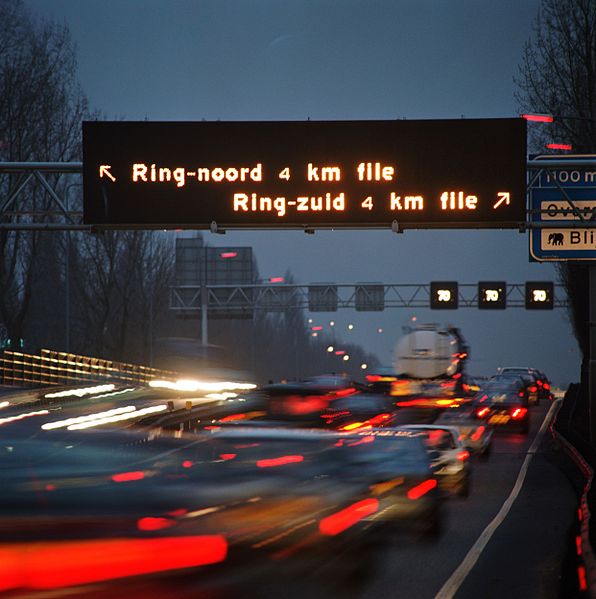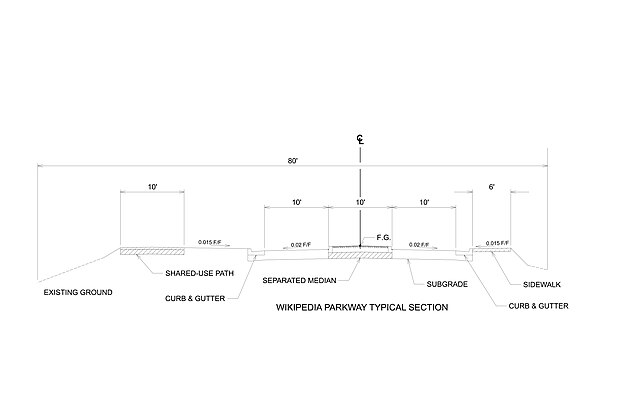Road traffic safety refers to the methods and measures used to prevent road users from being killed or seriously injured. Typical road users include pedestrians, cyclists, motorists, vehicle passengers, and passengers of on-road public transport.
Sidewalks, curbs and traffic signals in Hagerstown, Maryland, United States
Speed limits in different areas, unusually with only a "recommended" limit (130 km/h) for the Autobahn
DRIP variable message sign guiding traffic on the Dutch A13 motorway
Vehicles experiencing a breakdown or an emergency can stop in the emergency lane; these lanes may themselves present risks to traffic.
Highway engineering is a professional engineering discipline branching from the civil engineering subdiscipline of transportation engineering that involves the planning, design, construction, operation, and maintenance of roads, highways, streets, bridges, and tunnels to ensure safe and effective transportation of people and goods. Highway engineering became prominent towards the latter half of the 20th century after World War II. Standards of highway engineering are continuously being improved. Highway engineers must take into account future traffic flows, design of highway intersections/interchanges, geometric alignment and design, highway pavement materials and design, structural design of pavement thickness, and pavement maintenance.
A typical cross-section drawing of a roadway
A U.S. Federal Highway Administration (FHWA) worker inspects a washout in the shoulder of West Virginia Route 150.






